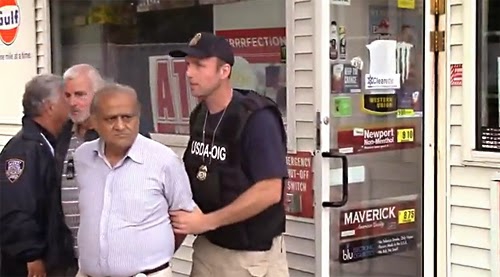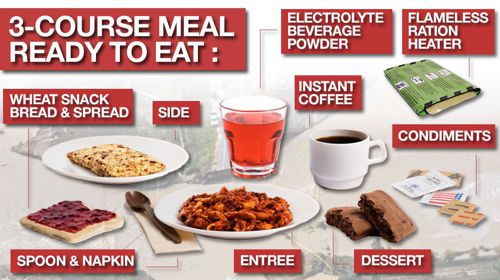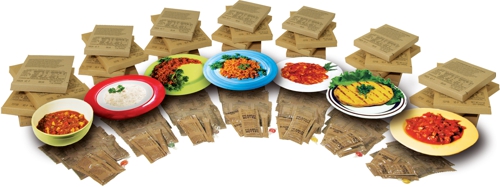Solutions
SNAP (Food Stamps) - solved!
Quick Summary

Liquor - Cigarettes - Cash ... "We accept food stamps"
Issue
Per the U.S. Government, over 44 million (1 out of every 7) Americans are receiving food assistance (SNAP) benefits. These benefits, which were previously dispensed as printed Food Stamps, are now provided in the form of Electronic Benefit Transfer (EBT) “debit” cards.
Why is this Issue a Problem?
While SNAP intentions are laudable, and most play by the rules, there is ample opportunity for abuse and fraud. Abuse of the program is exacerbated by the use of cash-equivalent EBT debit cards.
Fraud and abuse problems to be addressed include:
- Trafficking – EBT cards are exchanged for cash
- Ineligible recipients – People lie on applications to get benefits to which they are not entitled
- Falsified applications – Overpayment based on exaggerated claims of poverty
- Fraudulent merchandisers – Retailers illegally allow EBT purchases of non-food items, such as liquor, gasoline, or entertainment
Non-Solutions
- Do Nothing – The default, political non-solution. Usually involves pouring more money into faulty programs
- Focus on cost-cutting – to the exclusion of other solutions
Bob The Engineer's Solution: Project "Healthy To The Home"

Instead of giving away fraud-prone EBT debit cards, Bob’s Healthy To The Home solution provides extremely healthy meals in the form of Meals Ready to Eat (MREs), delivered directly to SNAP recipients’ doors.
Healthy To The Home is the solution that simultaneously addresses abuse, fraud, and poor nutrition in a way that satisfies SNAP goals, as well as the goals of all parties involved (except those committing fraud).
Everyone happy, happy, happy!
Details
Background
Some people, often through no fault of their own, due to a poor economy or physical/mental health issues, fall on hard times and are unable to provide for themselves and/or their families. Lending a helping hand is one of the generous acts of compassion for which Americans are well known.
Historically, food assistance to the downtrodden was provided by relatives, churches, private charities, and nonprofit food banks. Government began taking over the nutrition task with food programs dating back to the Great Depression (1929 to 1937) and culminating in a nationwide Food Stamp Program enacted by the Food Stamp Act of 1977.
In 2008, for psychologically-cosmetic reasons, the name of the Federal program was changed to the Supplemental Nutrition Assistance Program (SNAP), and the name of the Food Stamp Act of 1977 was changed to the Food and Nutrition Act of 2008.
Printed Food Stamps were replaced by Electronic Benefit Transfer (EBT) “debit cards" issued to recipients that electronically transfer government benefits to retailers to pay for purchases.
As of 2015, SNAP participation grew to 45 million persons at an annual cost of $70B.
Fraud and Abuse Issues
SNAP is abused through: trafficking, ineligible recipients, falsified applications, and fraudulent merchandisers.
- Popular websites, e.g., eBay, Craigslist, Facebook and Twitter, have advertised the potential sale of SNAP benefits in exchange for cash.
- Retailers disqualified from SNAP for past abuse lie on re-application to get in the program again.
- Foodstuffs purchased with EBT cards are shipped out of the U.S. to relatives of recipients.
- EBT cards have been used to purchase food and non-food items aboard cruise ships and at resorts.
Fraud costs billions of dollars each year.
While fraud and abuse are significant, Bob The Engineer believes the most disturbing problems are:
- Nutrition – SNAP fails to providing nutrition, one of SNAP's primary goals
- Dependency – Instead of a temporary safety net, SNAP has also created long-term dependents
Nutrition Issues
By definition, "Supplemental Nutrition Assistance Program" (SNAP) has a goal of providing nutrition to low-income persons. However, SNAP recipients spend billions of dollars of benefits to buy fast food, which hardly qualifies as quality nutrition.
“Fast food has become a major source of nutrition in low-income, urban neighborhoods across the United States." "The overabundance of fast food and lack of access to healthier foods, in turn, have increased African American and Latino communities' vulnerability to food-related death and disease. Structural perpetuation of this race- and class-based health crisis constitutes ‘food oppression.’ ”
Nutrition and Food Police
Various self-appointed dietary authoritarians (fondly referred to as “Food Police”), range from individuals (e.g., former NYC Mayor/billionaire Michael Bloomberg and Michelle Obama) to cities (e.g., San Francisco) to international organizations (e.g., World Health Organization) have attempted to impose their dietary values on the public through excessive taxation and/or force of law.
While he was NYC Mayor, Mr. Bloomberg attempted to ban the sale of large “sugary drinks” at movie theaters, restaurants, sports arenas, and coffee houses.
Data point: Mr. Bloomberg, while seeking to ban drinks like Starbucks’ Frappuccinos, for unexplained reasons, apparently thinks it OK to go next door and buy a fifth of whisky. Just data – draw your own conclusions.
Admirably, Michelle Obama pursued healthier school lunches, an effort that unfortunately failed and resulted in volumes uneaten food. (photos of Michelle’s “healthy” school lunches posted on social media by school students looked so inedible, the photos went viral, as the food went to waste.) Feeble implementation - no direct fault of Ms. Obama.
Data point: Ms. Obama, a millionaire, sends her own children to an exceedingly prestigious private school (Sidwell Friends School) where school lunches are selected from a menu of gourmet offerings. Just data – draw your own conclusions.
Bob The Engineer's Solution: Project "Healthy To The Home"
Bob’s Healthy To The Home solution substitutes super healthy meals in the form of Meals Ready to Eat (MREs) for fraud-prone EBT debit cards.
While fraud and abuse are significant issues, Bob The Engineer believes the most troubling problems are:
- Nutrition – SNAP dramatically fails in providing nutrition, one of its primary stated goals
- Dependency – Instead of a temporary safety net, SNAP has created long-term dependents
Healthy To The Home solves these problems:
- Abuse – Not a 5-star dining experience, MREs self-restrict SNAP applicants to persons actually needing food
- Fraud – Not much of a black market for MREs
- Access – No longer an issue, healthy meals delivered directly to the door
- Nutrition – MREs are very high in nutritional value
- Dependency – A steady diet of MREs serves to “inspire” SNAP recipients to seek employment/higher paying employment and remove themselves from the program
Key Features of "Healthy To The Home"
What's an MRE?

"The Meal, Ready-to-Eat – commonly known as the MRE – is a self-contained, individual field ration in lightweight packaging bought by the United States military for its service members for use in combat or other field conditions where organized food facilities are not available." — en.wikipedia.org/wiki/Meal,_Ready-to-Eat

Nutrition: Military MREs get 5 out of 5 stars for nutrition. Military MREs are formulated to meet Institute of Medicine's Dietary Reference Intake guidelines, and are designed for the very best nutrition under the very worst combat conditions.

Taste: Military MREs might be ranked as 2-3 out of 5 stars. All considered, not bad. Civilian versions can be Improved in this category.
In case you were wondering, yes, Bob The Engineer has eaten MREs and speaks from experience.
Variety

SNAP meals can be offered in even greater variety than the current (military) menu, which includes:
| - Spaghetti w/ Meat Sauce | - Shredded BBQ Beef |
| - Beef Taco | - Chicken w/Egg Noodles and Vegetables |
| - Chicken w/Egg Noodles and Vegetables | - Pork Rib |
| - Chili and Macaroni | - Chili w/ Beans |
| - Beef Brisket | - Meatballs w/ Marinara Sauce |
| - Beef Stew | - Chicken Chunks |
| - Mexican Style Chicken Stew | - Elbow Macaroni and Tomato Sauce |
| - Vegetarian Taco Pasta | - Cheese Tortellini |
| - Southwest Beef and Black Beans | - Maple Sausage |
| - Beef Ravioli | - Jalapeno Pepper Jack Beef Patty |
| - Hash Brown Potatoes w/Bacon | - Lemon Pepper Tuna |
| - Asian Style Beef Strips w/Vegetables | - Chicken Pesto Pasta |
| - Spinach Mushrooms and Cream Sauce Fettuccine |
Cultural, Age, and Dietary Accommodation
| Meets lifestyle diets | Tailored to age groups |
|---|---|
| - Kosher | - Adult |
| - Halal | - Teen |
| - Vegetarian | - Child |
| - Gluten-Free | - Toddlers |
| - Dairy-Free | - Infant |
Distribution and Storage

MREs ... from Military to civilian delivery
MREs are delivered directly to the SNAP recipient's door. MREs do not require refrigeration, and with a shelf life of 3-5 years, storage and delivery is made easy.
Bonus Solution: Fast food restaurants are plentiful in low-income inner-city neighborhoods, but grocery stores offering healthy foods are rare. Compounding the problem, many low-income persons do not have transportation to access healthy food retailers.
Direct delivery to the door solves these problems.
Cost
While developed for military use (unauthorized civilian sales are illegal), the government can procure civillian versions for SNAP. Civillian MREs would cost less than the military version because:
- Do not need to survive a 1250-foot parachute drop
- Do not need a flameless ration heater and water-resistant matches
- Do not need to include utensils, napkin, toilet paper, and moist towelette
- Do not need the extra seasonings, e.g. salt, pepper, sugar, etc.
- No beverage mixing bag needed
Side Benefits
- Economic boost – Increased commerce for American MRE suppliers with manufacturing in the U.S.
- Jobs – Increased business for USPS and/or private delivery services
- Special Bonus: MREs are so healthy, they satisfy even the wildest nutritional dreams of the self-appointed dietary authoritarians/Food Police